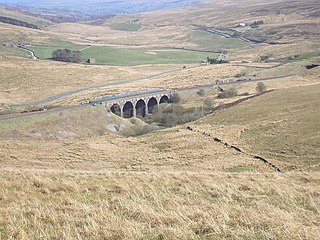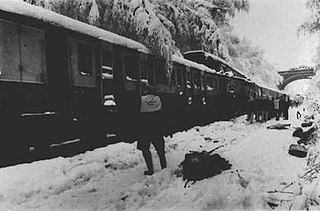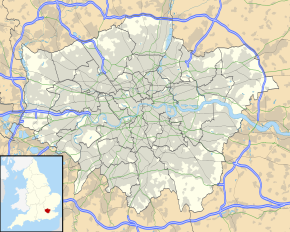
Railway signalling (BE), also called railroad signaling (AE), is a system used to control the movement of railway traffic. Trains move on fixed rails, making them uniquely susceptible to collision. This susceptibility is exacerbated by the enormous weight and inertia of a train, which makes it difficult to quickly stop when encountering an obstacle. In the UK, the Regulation of Railways Act 1889 introduced a series of requirements on matters such as the implementation of interlocked block signalling and other safety measures as a direct result of the Armagh rail disaster in that year.

The Hawes Junction rail crash occurred at 5.49 am on 24 December 1910, just north of Lunds Viaduct between Hawes Junction and Aisgill on the Midland Railway's Settle and Carlisle main line in the North Riding of Yorkshire, England. It was caused when a busy signalman, Alfred Sutton, forgot about a pair of light engines waiting at his down (northbound) starting signal to return to their shed at Carlisle. They were still waiting there when the signalman set the road for the down Scotch express. When the signal cleared, the light engines set off in front of the express into the same block section. Since the light engines were travelling at low speed from a stand at Hawes Junction, and the following express was travelling at high speed, a collision was inevitable. The express caught the light engines just after Moorcock Tunnel near Aisgill summit in Mallerstang and was almost wholly derailed.

Kings Langley railway station is almost under the M25 motorway near Junction 20. It serves the village of Kings Langley, and the nearby villages of Abbots Langley and Hunton Bridge. The station is 21 miles (34 km) north west of London Euston on the West Coast Main Line. The station and all services calling at the station are operated by London Northwestern Railway.
The Winwick rail crash took place at Winwick Junction, near Warrington on the London, Midland and Scottish Railway, on 28 September 1934. Two trains collided, resulting in 11 deaths and 19 injured.
There was a rail crash near Welwyn Garden City railway station in Hertfordshire, England, in 1935 which killed fourteen people, and another in 1957 with one fatality.
The Connington South rail crash occurred on 5 March 1967 on the East Coast Main Line near the village of Conington, Huntingdonshire, England. Five passengers were killed and 18 were injured.

The Thirsk rail crash occurred on 31 July 1967 at Thirsk, Yorkshire, England on the British Rail East Coast Main Line.

The Seer Green rail crash occurred on the morning of 11 December 1981 near Seer Green, Buckinghamshire, England between two four-car Class 115 diesel multiple units, killing one driver and three passengers.

The 1984 Eccles rail crash occurred on 4 December 1984 at Eccles, Greater Manchester, when an express passenger train collided at speed with the rear of a freight train of oil tankers. The driver of the express and two passengers were killed, and 68 people were injured. The cause of the accident was determined to be that the driver of the express train had passed a signal at danger.

A signalman or signaller is an employee of a railway transport network who operates the points and signals from a signal box in order to control the movement of trains.

Challow railway station is a former railway station about 2 miles (3 km) south of Stanford in the Vale on the A417 road between Wantage and Faringdon. It is named after the villages of West Challow and East Challow, which are 1.5 miles (2.4 km) and 2.5 miles (4 km) southeast of the former station.
The Wrawby Junction rail crash was a train crash which occurred on 9 December 1983, at Wrawby Junction, near Barnetby station, North Lincolnshire, England.
The Battersea Park rail crash occurred on 2 April 1937, just south of Battersea Park railway station on the Southern Railway, in London, England. Two electrically driven passenger trains collided on the Up Local line; the second train, from Coulsdon North to Victoria, had been allowed into the section while it was still occupied by the first train, from London Bridge to Victoria. The signalman at Battersea Park, G. F. Childs, believing there was a fault with the Sykes electromechanical interlocking apparatus which was installed at the box, had opened up the case of the instrument and inadvertently cleared the interlock which should have prevented this situation. The official enquiry ruled that he subsequently accepted the Coulsdon train, although he should have been aware that the London Bridge train had not cleared the section. Ten people were killed, including the guard of the London Bridge train, and eighty people were injured, seven sustaining serious injuries. Another accident had occurred at Battersea Park in 1881.
The Knowle and Dorridge rail crash was a fatal rail crash that occurred at Dorridge railway station in the West Midlands, England, on 15 August 1963. Three people died in the crash after a signalman's error routed a small freight train into the path of an express passenger train which slowed but could not stop before colliding with it.
The Kirtlebridge rail crash took place in 1872 at Kirtlebridge railway station in Dumfriesshire. An express passenger train ran into a goods train that was shunting; 11 people lost their lives immediately, and one further person succumbed later. The cause was a failure to communicate between the station master in charge of the shunting operation, and the signalman. There was not full interlocking of the points, and the block system of signalling was not in use.
The Marden rail crash occurred on 4 January 1969 near Marden, Kent, United Kingdom, when a passenger train ran into the rear of a parcels train, having passed two signals at danger. Four people were killed and 11 were injured. One person was awarded the British Empire Medal for his part in the aftermath of the collision.

The 1944 Ilford rail crash occurred on 16 January 1944 when, in darkness and dense fog, an express passenger train passed a signal at danger and collided with another passenger train that was stopped at Ilford railway station in Essex, England.
The St Johns train crash happened at 9 am on 21 March 1898 when, in thick fog, a passenger train waiting to enter St Johns Station on the South Eastern Railway, UK was run into by another passenger train. Three people were killed and about 20 injured in the accident, which was caused by a signalman's error.

On the evening of 26 December 1962, cold weather and snow in and around Crewe had caused points to become frozen and trains were being detained at signals. About midway between Winsford and Crewe, the 13:30 Glasgow Central to London Euston Mid-Day Scot, hauled by an English Electric type 4 diesel, D215, with 13 coaches and 500 passengers, was stopped at a signal but the driver found the telephone to Coppenhall Junction, the next signal box ahead, out of order. Seeing the next signal ahead he decided to proceed down towards it and use the telephone there, but too fast. In the darkness he failed to notice the 16:45 express from Liverpool Lime Street to Birmingham New Street, hauled by an electric locomotive with eight coaches with 300 passengers, standing on the line ahead and collided with it at about 20 mph (32 km/h).












